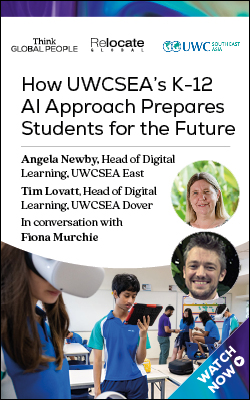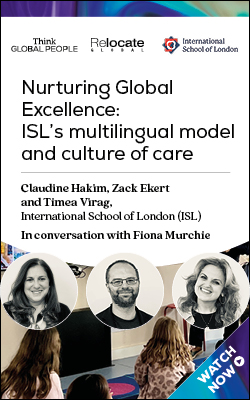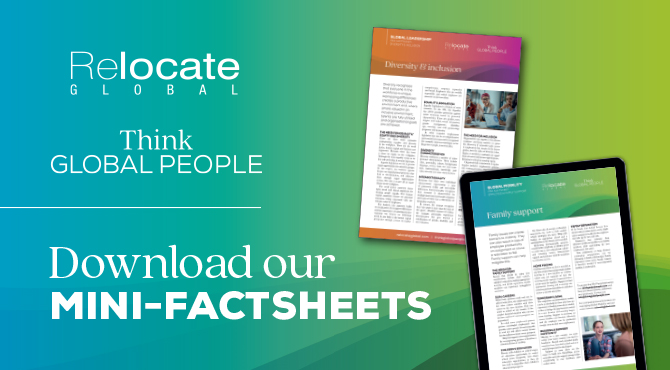A(i) Shiny New Toy
Generative AI promises to transform education, but without anchoring learning in human-centered values like failure, agency, and ethical reasoning, schools risk losing sight of their true purpose. To nurture fully developed students—not just polished outputs—educators must resist the hype and prioritize compassion, character, and critical thinking.

Visit the Oasis International School Featured School page
In the fall of 2013, the largest shift in education that I have experienced occurred in my classroom: every student was given an iPad. In those heady days, it seemed like the horizon stretched on endlessly as I would hear about a new app or web tool that could supercharge my classroom and make learning more engaging and accessible for every student. Then came the reality: a project we worked on with augmented reality wouldn’t load when we scanned the QR code, a web tool would lag and stutter and crash when 22 students used it simultaneously, and often 8 or more students wouldn’t have a charged iPad. Famously, futurist Robert Amara posited, “We tend to overestimate the effect of a technology in the short run and underestimate the effect in the long run.” (Ratcliffe, 2016) A decade later, with the emergence of generative artificial intelligence (genAI) we are presented with yet another shiny new toy. The truth is, genAI will reshape education but not at the speed it is predicted. In the midst of this change, there must be anchors that education holds as unmovable truths. Without these anchors, being blown off course is inevitable.
A Human Centered Approach
In a school, the center of the universe is the student and those students are undeniably human. Our school’s student learning outcomes are to develop that student into an adult who is innovative, values diversity, has an intrinsic desire to learn, and impacts the world around them. Most schools have some similar aspirational statements for their students. Educators must cling to these in the overwhelming flow of hype and the rush for profit as every app and tool is increasingly integrated with genAI. Our human students need our time, our energy, our compassion, and our knowledge. Part of the selling point of genAI is the time and speed at which it can accomplish tasks, the optimization of a work flow. We must never reduce our students to a work flow. It will always take time to build within students characteristics that will benefit them and our world in future days.Human Development Through Failure
A key component of learning is failure. Many humans have learned to write. Many have written books, which line the shelves of libraries around the world. Still, we ask children to learn to write, knowing that they will make mistakes, they will fail, but great strides in their learning towards mastery will arise from their failures. With genAI, we are now at a point where a five year old child could use voice recognition features and tell the genAI to produce a university level paper on astrophysics. Education must be careful to fight against this type of results-based value. The output of our students is not our goal. Many times schools will produce publications that tout how students performed on Advanced Placement tests or scored highly on other tests. Is this the product, the scores? The student is not only the center of education but the product of the educational process.The generation of students that currently inhabits our schools is one of the most risk averse groups in history. (Boles, 2025) How will they be shaped by the looming idea that a computer can give them a far better answer than they can produce, the student just needs to push a button? Education must not set its sights on developing students who can produce perfect products, but instead it must produce students who are willing to try, to be imperfect, and to try again, stumbling on their way towards mastery.Self Agency and Leadership
Another aspirational goal of nearly every school is for students to become better leaders. This often takes educators through the twisted labyrinth of defining “What is leadership?” Simply put, you cannot lead others until you can lead yourself. Leading yourself can be also succinctly termed “sel- agency”. Before a student can become president of the student council or serve as captain of a sports team, they must push themselves into those arenas, where they are tested and bloodied but then emerge as leaders. How can students develop this agency when any question or problem is turned into a genAI prompt? Outsourcing self-agency to a machine, no matter how smart, makes one wonder who is the robot and who is in control. If our next generation of leaders is to be innovative and far-sighted, then they must grow self-agency in the halls, rooms, and fields of our schools.Moral and Ethical Wrestling
When students are young, educators, out of concern and necessity, interpret the world for them in a series of sharp distinctions and rules. As they grow and mature, we pull back the veil from the issues and reveal the ambiguities that lie underneath. As students reach high school, they are ready to grapple with the moral and ethical issues that persist in the real world. As a former history teacher, my classes moved from a black and white thinking of issues like “Slavery is bad” to a more nuanced understanding, grappling with ideas such as “Should reparations for slavery be instituted?” when whole economies are built on slavery.As we move forward in a world permeated with genAI, where it is integrated with apps and at the top of every new search we engage in, we need to make sure that we aren’t removing the element of moral and ethical wrestling from students. For example, the prompt “Why euthanasia is the best choice for the elderly” in genAI creates four main points with multiple subpoints about why this is the “right” choice. It does note that it is a highly controversial topic, but when the goal is a good grade, those arguments on the other side, which are given far less space in the generated response, can be easily ignored.What We Risk Is Too Great
Amara’s Law tells us that at our current point, the predicted changes that genAI is making on education are overestimated. Schools must take this moment to decide what we must cling to as genAI moves forward and gains widespread acceptance in classrooms. The actual product of our schools is not test scores, but our students. If schools cannot produce students who can fail, who exert control over their lives, and who choose to grapple with moral and ethical issues, then the school is failing its students.Schools must thoughtfully and intentionally walk a line that embraces the reality of genAI as a valid tool while also placing the highest priority on developing students that are highly functioning humans. In recent years, many people have started advocating for limitations on technology and social media. Schools need to grapple with this and take action now because risking the mental health and academic futures of our students is unacceptable. We must produce humans who see and use artificial intelligence as a tool to bend to their benefit, not humans who are needlessly enamored by this shiny new toy.Boles, S. (2025, June 24). Why are young people taking fewer risks? Harvard Gazette.Ratcliffe, S. (Ed.). (2016). Oxford essential quotations (4th ed.). Oxford University Press.
Visit the Oasis International School Featured School page


Find out more about the Think Global People and Think Women community and events.
Subscribe to Relocate Extra, our monthly newsletter, to get all the latest international assignments and global mobility news.Relocate’s new Global Mobility Toolkit provides free information, practical advice and support for HR, global mobility managers and global teams operating overseas.
©2025 Re:locate magazine, published by Profile Locations, Spray Hill, Hastings Road, Lamberhurst, Kent TN3 8JB. All rights reserved. This publication (or any part thereof) may not be reproduced in any form without the prior written permission of Profile Locations. Profile Locations accepts no liability for the accuracy of the contents or any opinions expressed herein.







































